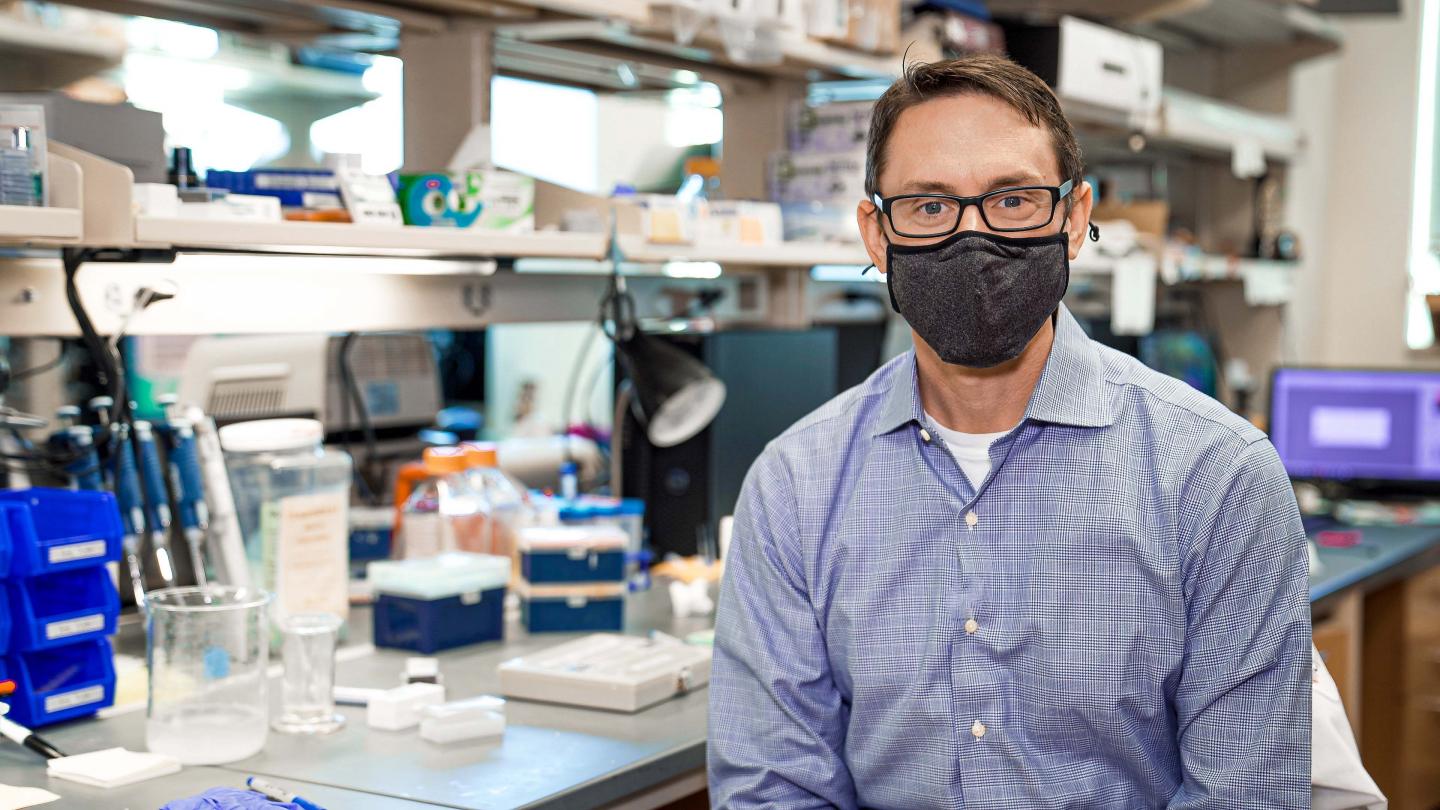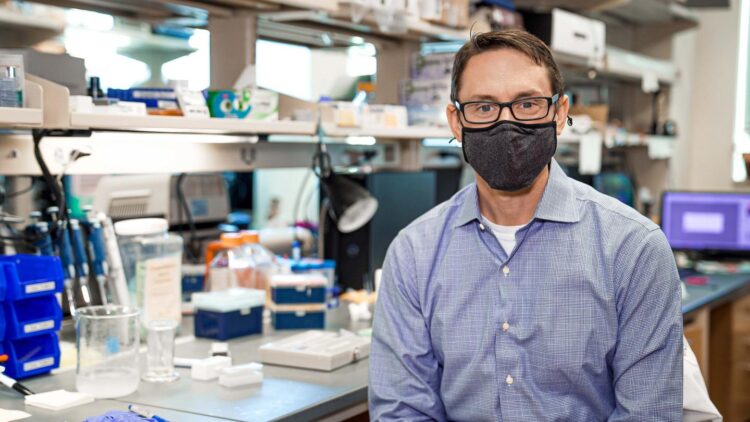Fralin Biomedical Research Institute at VTC scientists describe ‘molecular brakes’ of the brain

Credit: Virginia Tech
A research team led by Michael Fox, a professor at the Fralin Biomedical Research Institute at VTC, has identified the type of brain cell that produces collagen 19, a protein that is crucial for the formation of inhibitory circuits in the brain.
The study, published in the Journal of Neuroscience, depicts a previously unknown molecular mechanism underlying healthy brain development.
This insight could one day help scientists establish the basis for developing new drugs that mature or repair cellular networks and mitigate disease.
Neurons and glia are the most abundant types of brain cells. Glia, in particular star-shaped glia called astrocytes, release signaling molecules that support the growth and maintenance of healthy synapses, the chemical communication structures between neurons.
Yet in this study, Fox’s team discovered that a type of interneuron, a cell type that interprets and relays information sent from other neurons, produces the majority of brain-derived collagen 19 to stimulate synapse formation.
“At a time when many studies are identifying interneuron-like roles for astrocytes, we’ve identified an unexpected astrocyte-like role for interneurons,” said Fox, who is also the director of the School of Neuroscience in Virginia Tech’s College of Science.
In previous research, Fox’s team discovered that mice lacking the gene that encodes collagen 19 exhibit a loss of inhibitory synapses surrounding neuronal cell bodies located in the brain’s hippocampus and neocortex. In humans, these brain regions are involved in cognitive functions, such as reasoning, language, perception, memory, and learning. They have also been shown to play roles in sensory perception, memory, and learning in mice.
Excessive excitatory connections between neurons in these brain areas could explain why mice with this genetic mutation are more prone to develop seizures and behavioral abnormalities. This gene has also been associated with neuropsychiatric disorders in humans. In particular, it’s been suggested that loss of this gene in humans could be associated with familial cases of schizophrenia, a brain disorder that afflicts more than 2 million Americans, according to the National Institute of Mental Health.
But Fox’s earlier discovery about the importance of collagen 19 beckoned another question: Where does this protein come from?
In the new study, the scientists used riboprobes – small segments of ribonucleic acids (RNA) that bind to complementary segments of RNA – to look for different cell type markers in normal mice, wild-type, and mice with the genetic mutation. This method revealed that the majority of brain-derived collagen 19 is produced by a type of interneuron.
This interneuron type is one of the first to develop in the neocortex and it plays a role in helping surrounding synaptic circuits mature. In this case, after this type of interneuron releases collagen 19 molecules, the proteins serve as a signal that instructs another abundant type of interneuron to produce inhibitory synapses.
“Initially when we proposed this, some people thought it was far-fetched that one neuron could influence another cell’s development when they’re not synaptically coupled,” Fox said.
Roughly 20 percent of a person’s body mass is made of collagens, which form the matrix of connective tissue that wraps around organs, muscles, and cellular structures. Because of the complex molecular structure of collagens, just a small genetic variation alters the protein’s shape, rendering the collagen molecule useless waste that cells destroy and recycle for parts.
Collagen genetic mutations are linked to a litany of connective tissue disorders, but Fox says they’re still underexplored in the brain.
“What keeps me interested in this project is that we know so little about the role that extracellular matrix proteins like collagen 19 play in mediating healthy circuit formation,” Fox said. “When you’re a student taking a neuroscience class, you’ll often learn that the brain doesn’t have a lot of connective tissue in it, but we’re finding more and more that the presence of these extracellular matrix proteins actually seems to lay the foundation for healthy brain development.”
Fox’s lab plans to build on this discovery by working to develop new ways to restimulate inhibitory synapse growth in diseased or injured brains. The team previously found that a small peptide derived from this collagen, matricyptin, is sufficient to promote the growth of inhibitory synapses in cells lacking collagen 19.
“We want to translate what we’re learning about how these circuits develop into therapeutics,” Fox said. “We’ve found a peptide that shows some promise in stimulating inhibitory synapse formation and are studying ways to employ it.”
###
The study’s first author, Jianmin Su, is a research assistant professor at the Fralin Biomedical Research Institute. Other research contributors included Danielle Basso, Shivani Iyer, Kaiwen Su, and Jessica Wei.
This study was funded by a grant from the Brain and Behavior Research Foundation.
Media Contact
Whitney Slightham
[email protected]
Related Journal Article
http://dx.





